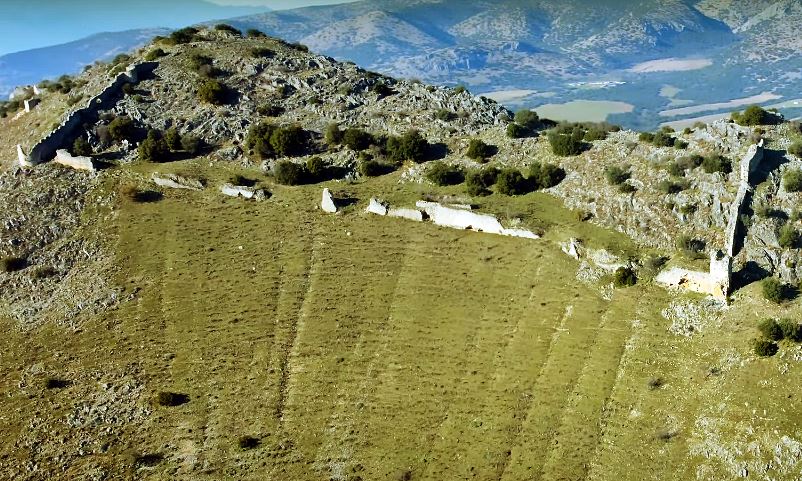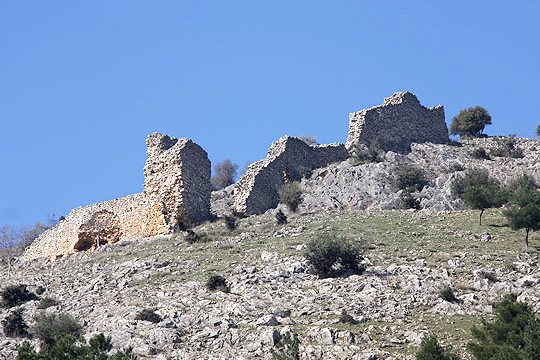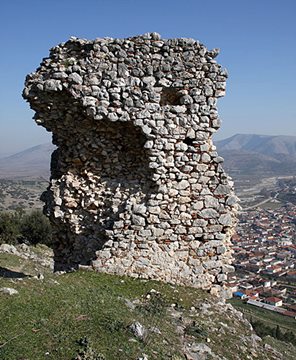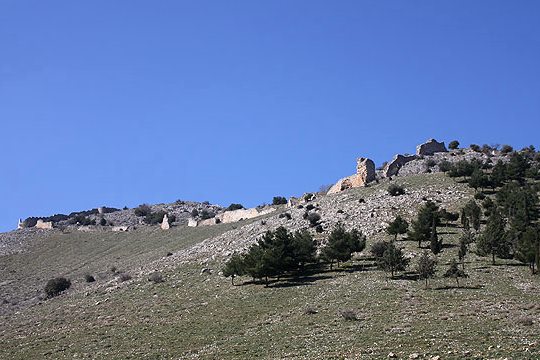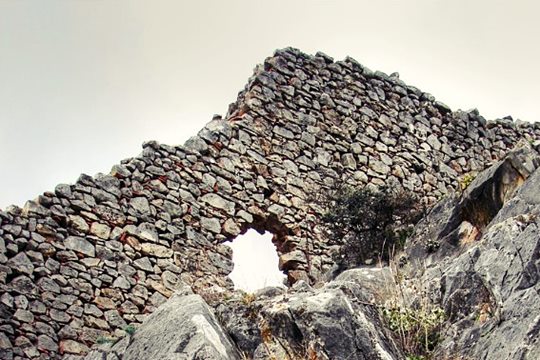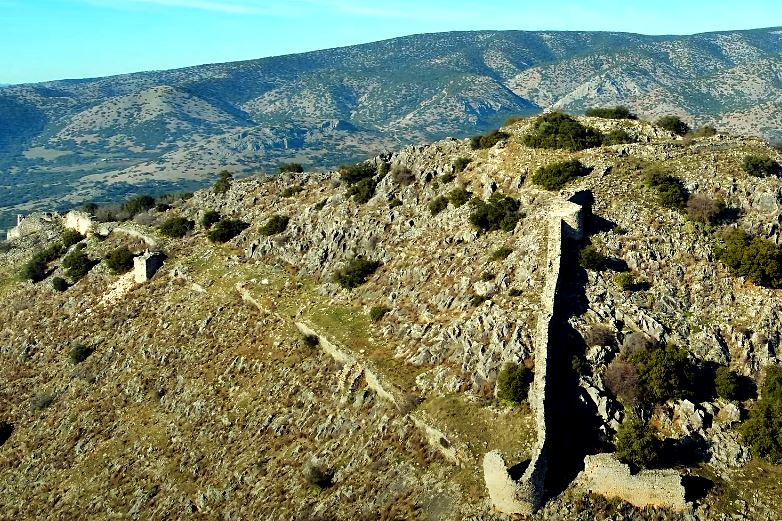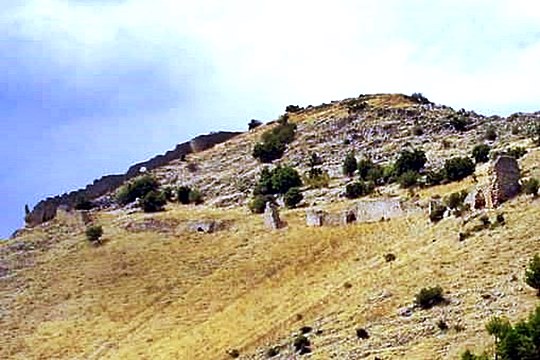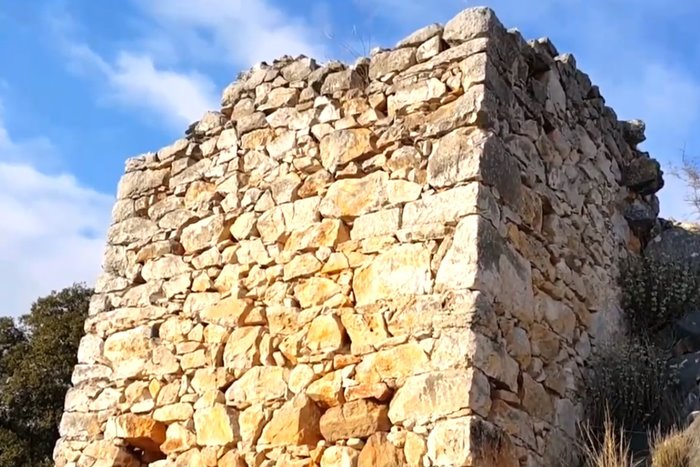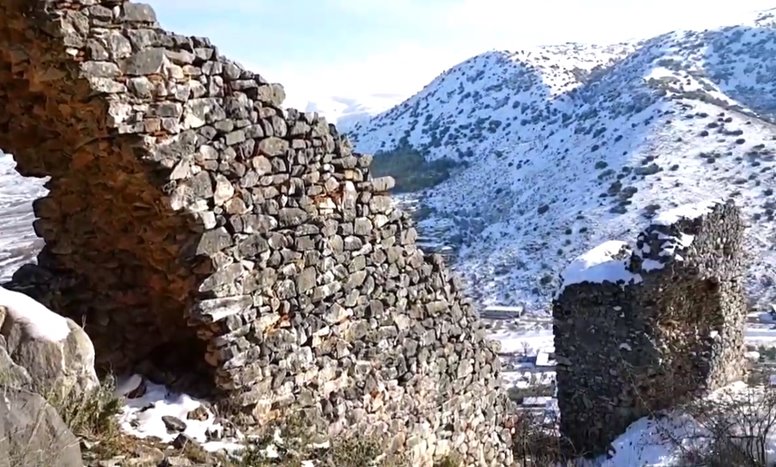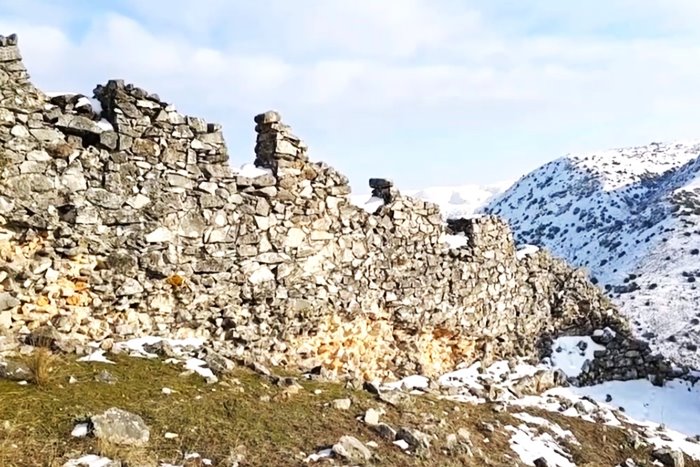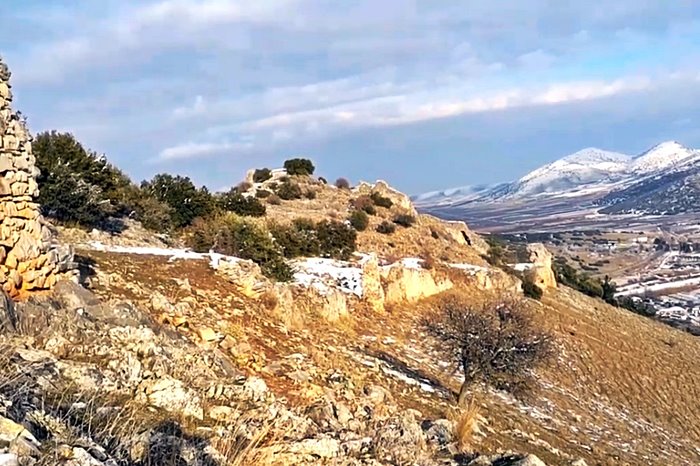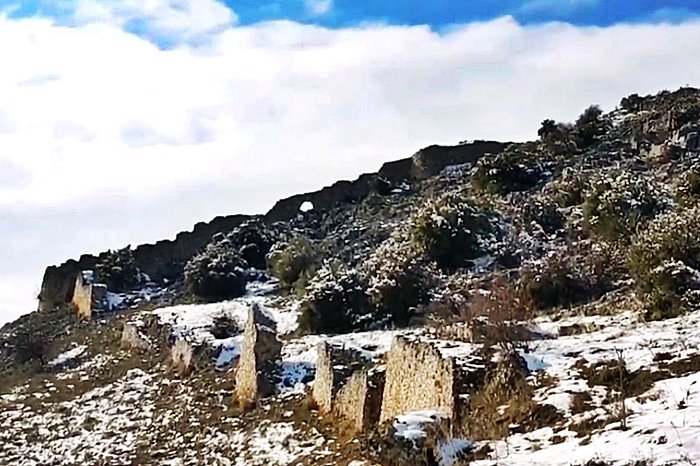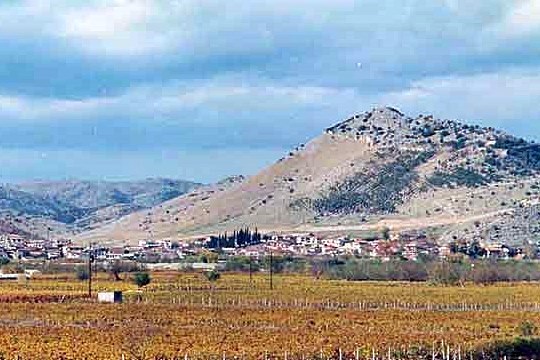Damasi, Tyrnavos, Larisa,Thessaly
Damasio Castle
| Location: |
| Damasi village in Thessaly |
| Region > Prefecture: | 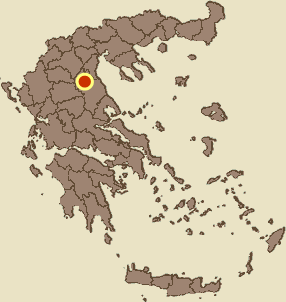 |
| Thessaly Larisa | |
| Municipality > Town: | |
| City of Tyrnavos • Damasi | |
| Altitude: | |
|
Elevation ≈ 265 m (Relative Height≈200 m) |
| Time of Construction | Origin | |
| perhaps 10th cent. | BYZANTINE |
|
| Castle Type | Condition | |
| Castle |
In Ruins
|
A ruined castle on the rocky hill NW of the village Damasi of Tyrnavos region in Thessaly. The hill overlooks the Reveni passage formed by the river Titarisios, a tributary of Pineios river. This point, historically, was always on the borderline between Thessaly and Macedonia.
It is one of the largest castles in mainland Greece enclosing a fortified area of almost 45,000 sq.m. This is an unusual size for the standards of the Byzantine or Frankish forts in Greece.
Judging from the scarcity of references by historical sources and from the absence of visible remains in the interior, we conclude that this kastro has never been a significant settlement. Perhaps a small village, but not a medieval city (which would justify the extended fortification).
History
Apparently, the castle is at the location of an ancient site, the city Mylai.
It was built in the Middle Ages, but we do not known exactly when. It was not one of the fortresses built by emperor Justinian in the mid 6th century since it is not among the castles listed in Thessaly by the historian Procopius in his oeuvre De Aedificiis.
In the following centuries, 7th to 9th, Thessaly was flooded by invading Slav tribes and went through a dark period of oblivion and regression. No castle could have been built there, in those years.
The origin of the castle remains obscure because was ignored by the Byzantine sources. It is mentioned only once, by Cantakouzenos, in the late 14th century. Moreover, it has never been researched or excavated.
Most probably, it was built in the first decades of the 10th century, around 930, when emperor Romanos I Lekapenos built several castles in Macedonia and Thessaly, in an effort to contain the Bulgarians who, in the previous years, under the leadership of Symeon I attempted to expand their territory to the south.
Another less probable theory is that the castle was built in the 14th century, around 1330, when this part of Thessaly was a semi-autonomus state ruled by a local lord named Stefanos Gavrilopoulos. Actually, the only known historical reference to the castle of Damasi relates to the period of Gavrilopoulos: Ioannis Cantakouzenos in his historical work Historiae (book I, 473-474) written after 1360, mentions Damasi as one of the few castles that were in the possession of Gavrilopoulos when he died in 1333.
Gavrilopoulos has been one of the many Greek -and occasionally Serbian- semi-independent rulers of the region.
In 1393, the Ottomans invaded Thessaly and in 1423 conquered it and installed their rule permanently (until 1912).
Structure, Fortification & Buildings
This is a large castle with a perimeter of exterior walls around 1100m enclosing a surface of 45,000 sq.meters. In the middle of the castle there is a transverse fortified wall separating the interior in two parts, while at the highest point, at the northern side, there is an internal fortification which was the last point of defense and the command center.
The wall structure is not very sophisticated but was strong enough with several square and cylindrical towers along the walls. Most of the fortification is ruined or in bad condition and only one tower and a small part of the walls still stand. Also, there are no visible remains in the interior (not even a church).
The northern wall was built partly using ancient spolia which is an indication for the existence of an ancient site in the same location.
The castle follows a model which seems to have been in fashion in Thessaly and in the Northwestern Greece around the 10th century. Castles like Servia, Kastri, Grizano share some common characteristics not seen in other Greek castles: huge surface, built on a rocky hill close to fertile valleys, with non-sophisticated fortification but with many towers and a lot of free space in the interior.
It is not clear why these over sized structures were preferred. Perhaps the initial design was to develop a city in the interior of the huge fortifications. Some times this plan worked (Moglena, Servia) and some times did not (Damasi, Grizano). Or perhaps part of the spacious interior was by design for the flocks! For an agrarian place like the medieval Thessaly where the main property of the people (and the main pray of the raiders) was their animals, this would be an important factor.
On the hill there are also the remains of a Turkish outpost from the period 1881 to 1912 when Damasi was at the frontiers between Greece and Turkey.
| First entry in Kastrologos: | October 2012 | Last update of info and text: | June 2018 | Last addition of photo/video: | February 2023 |
Sources
- Ioannis Cantakouzenos, Historiae, book I, 473-474
- Video by the user Asterios Stelios ASnews Greek Nature - Wonderful Snowed Village and Byzantine Castle -Το χιονισμένο Δαμάσι και το κάστρο του
- ΑΡΧΑΙΟΛΟΓΙΚΟΝ ΔΕΛΤΙΟΝ, τεύχος 27-Β2, 1972, page 428
- Video (and photo 1) by the user G Traveller Κάστρο Δαμασίου | Damasio Castle
|
|
| Access |
|---|
| Approach to the monument: |
| - |
| Entrance: |
| Free but difficult access |
| Other castles around |
|---|
| Fort of Grizano |
| Castle of Grizano |
| Castle of Klokotos |
| Tower of Mamtzios |



